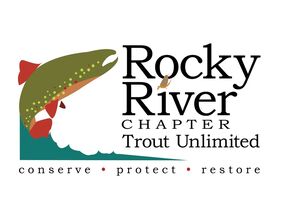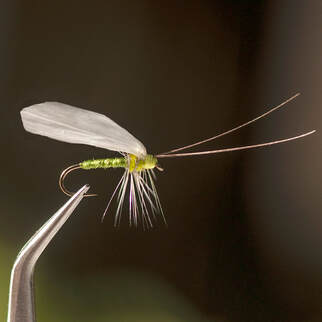Fly of the Month 07.21 - Lacewing
Brown lacewing (N. Micromus) and its close cousin the common green lacewing (N.Chrysoperla) are graceful flying terrestrials that are considered beneficial for pest control. The lacewing larvae predate on soft bodied insects such as aphids, mostly eating organic debris and to a much lesser degree, living plants.
With a web-like near transparent wing, lacewings are members of the same branch of insects as the Mantis and the Ant Lion. However, if you pick up a lacewing by hand you will receive a gentle, unpleasant, odorous spray as the little insect earns its reputation as a “stinky fly” (not to be confused with a stink bug or shield bug).
The life cycle of a lacewing begins with eggs placed on plant leaves with an unusual method of each single egg being placed on a stem-like pedestal. The eggs hatch into a very aggressive and hungry larva (these little guys may actually bite you a little bit if picked up) which searches the surrounding grounds and foliage for food. The larva feed for several weeks then pupate, building a cocoon on a leaf. The pupa matures and hatches into an adult to continue the life cycle. Like most terrestrials, the larva and pupa stages of the lacewing are of little importance to the angler.
Our local streams with overhanging banks and overhanging vegetation are the best candidates for using a terrestrial like the lacewing, especially with gardens nearby.
The lacewing adult is a poor flyer and is of primary interest to the angler. Lacewings are nocturnal and are mostly encountered by trout at dusk on windy days. They land by folding their wings in flight and simply drop down from the air to land. As with other flying terrestrials, a little wind sends them off course and into the water.
Any brown or green caddis fly pattern may be used to imitate a lacewing in a rush. However, tying a few more imitative lacewing flies for the summer terrestrial fly box is a better idea. The lacewing has a long brown or green body with a slight hump-back, almost pinky-finger-sized, web-like near transparent wings, small very pronounced spherical eyes and forward protruding antennae.
Brown Lacewing
Green Lacewing
Fly of the Month 07.21
Tom Adams and Alen Baker
Brown lacewing (N. Micromus) and its close cousin the common green lacewing (N.Chrysoperla) are graceful flying terrestrials that are considered beneficial for pest control. The lacewing larvae predate on soft bodied insects such as aphids, mostly eating organic debris and to a much lesser degree, living plants.
With a web-like near transparent wing, lacewings are members of the same branch of insects as the Mantis and the Ant Lion. However, if you pick up a lacewing by hand you will receive a gentle, unpleasant, odorous spray as the little insect earns its reputation as a “stinky fly” (not to be confused with a stink bug or shield bug).
The life cycle of a lacewing begins with eggs placed on plant leaves with an unusual method of each single egg being placed on a stem-like pedestal. The eggs hatch into a very aggressive and hungry larva (these little guys may actually bite you a little bit if picked up) which searches the surrounding grounds and foliage for food. The larva feed for several weeks then pupate, building a cocoon on a leaf. The pupa matures and hatches into an adult to continue the life cycle. Like most terrestrials, the larva and pupa stages of the lacewing are of little importance to the angler.
Our local streams with overhanging banks and overhanging vegetation are the best candidates for using a terrestrial like the lacewing, especially with gardens nearby.
The lacewing adult is a poor flyer and is of primary interest to the angler. Lacewings are nocturnal and are mostly encountered by trout at dusk on windy days. They land by folding their wings in flight and simply drop down from the air to land. As with other flying terrestrials, a little wind sends them off course and into the water.
Any brown or green caddis fly pattern may be used to imitate a lacewing in a rush. However, tying a few more imitative lacewing flies for the summer terrestrial fly box is a better idea. The lacewing has a long brown or green body with a slight hump-back, almost pinky-finger-sized, web-like near transparent wings, small very pronounced spherical eyes and forward protruding antennae.
Brown Lacewing
Green Lacewing
Fly of the Month 07.21
Tom Adams and Alen Baker
Lacewing
Hook: 2xl Dry, Size 12,14,16
Thread: Chartreuse 8/0 or equivalent
Wing: Clear Raffia
Abdomen: Light Olive Sparkle Yarn
Thorax: Light Olive Rabbit dubbing
Hackle: Light Dun rooster
Antennae: Stripped rooster stems
NOTE: The wing in the photo is raised higher than normal for illustrative purposes. The natural wing is lower like a caddis.
Directions :
Hook: 2xl Dry, Size 12,14,16
Thread: Chartreuse 8/0 or equivalent
Wing: Clear Raffia
Abdomen: Light Olive Sparkle Yarn
Thorax: Light Olive Rabbit dubbing
Hackle: Light Dun rooster
Antennae: Stripped rooster stems
NOTE: The wing in the photo is raised higher than normal for illustrative purposes. The natural wing is lower like a caddis.
Directions :
- Debarb and mount the hook in the vise and start the thread wraps at the eye. Make several wraps toward the bend to about the one third mark. Let the bobbin hang.
- Select a two inch section of yarn and cut from the card. Separate the yarn into strands and then split the strand in half, using a bodkin to make the division. Trim an end to square and tie in at the one third mark. Advance the thread trapping the yarn on top of the hook shank stopping at the hook bend. Take the thread back to the one third mark and let the bobbin hang. Make tight touching turns of yarn to the thread and secure with several thread wraps. Trim away any waste and neaten with thread as needed. Let the bobbin hang.
- Size and select a rooster hackle and strip away about a quarter inch of barbs and tie in the bare section immediately in front of the yarn with the “shiny” side toward the eye. Let the bobbin hang.
- Dub the thread with the light olive dubbing to form a thin noodle about two inches long. Form a small dub thorax. Let the bobbin hang.
- Make three or four tight touching turns with the rooster. Leave room for the head and antennae. Secure with thread wraps and let the bobbin hang. Trim any hackle barbs above the hook shank.
- Cut a one inch piece of raffia from the card and spread out to one layer. Trim with scissors a section that is about three eighths wide. Fold the length in half. Trim one end to a tapered shape. Tie the non trimmed end on top of the hook shank in front of the dubbing using the soft wrap method for position before tying in tight. Trim waste raffia and let the bobbin hang.
- Select two stripped rooster stems and match the curve. Tie in on top of the head with the curve up and secure with thread wraps.
- Make three or four half hitches and cut the thread close.

